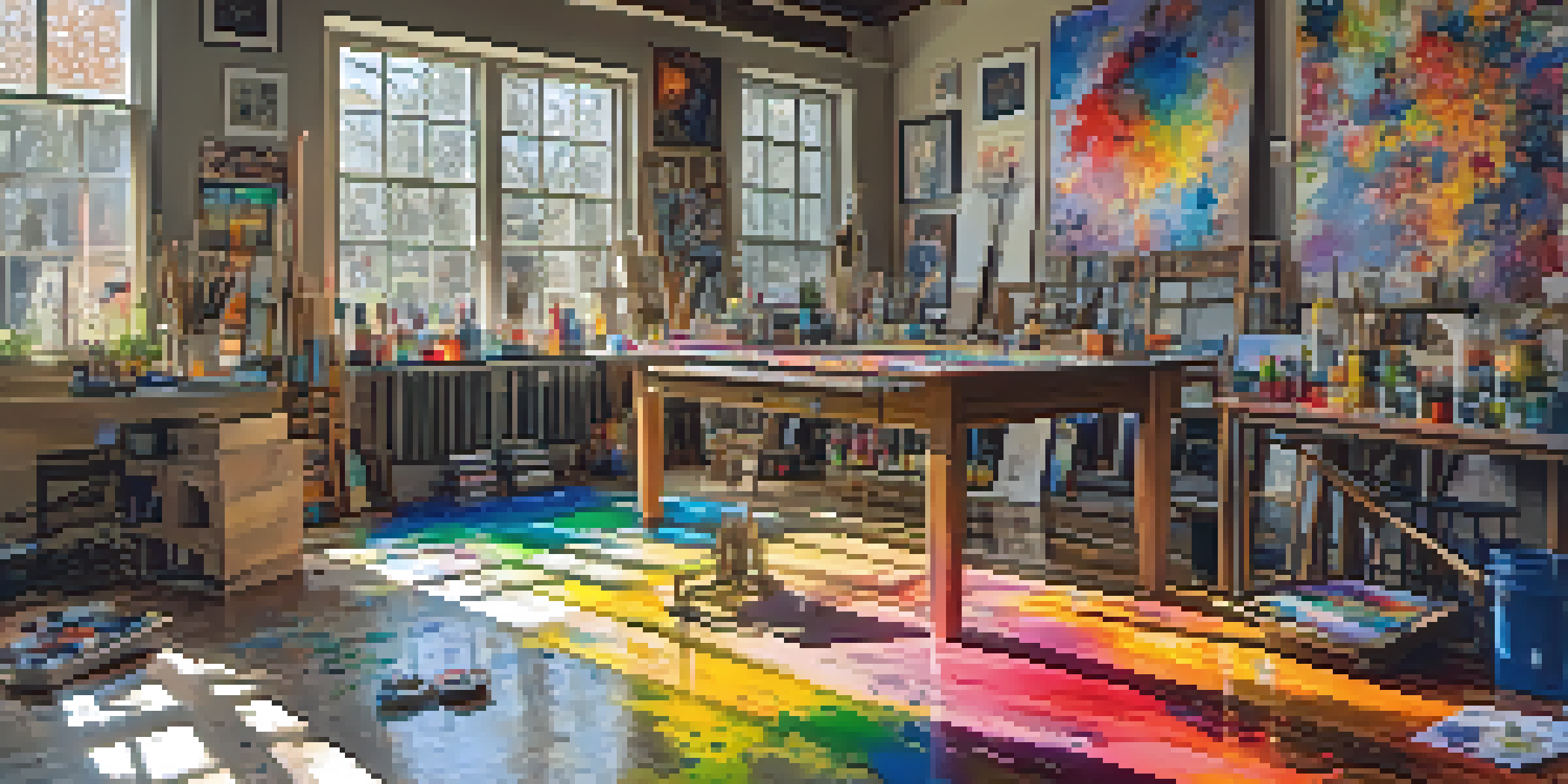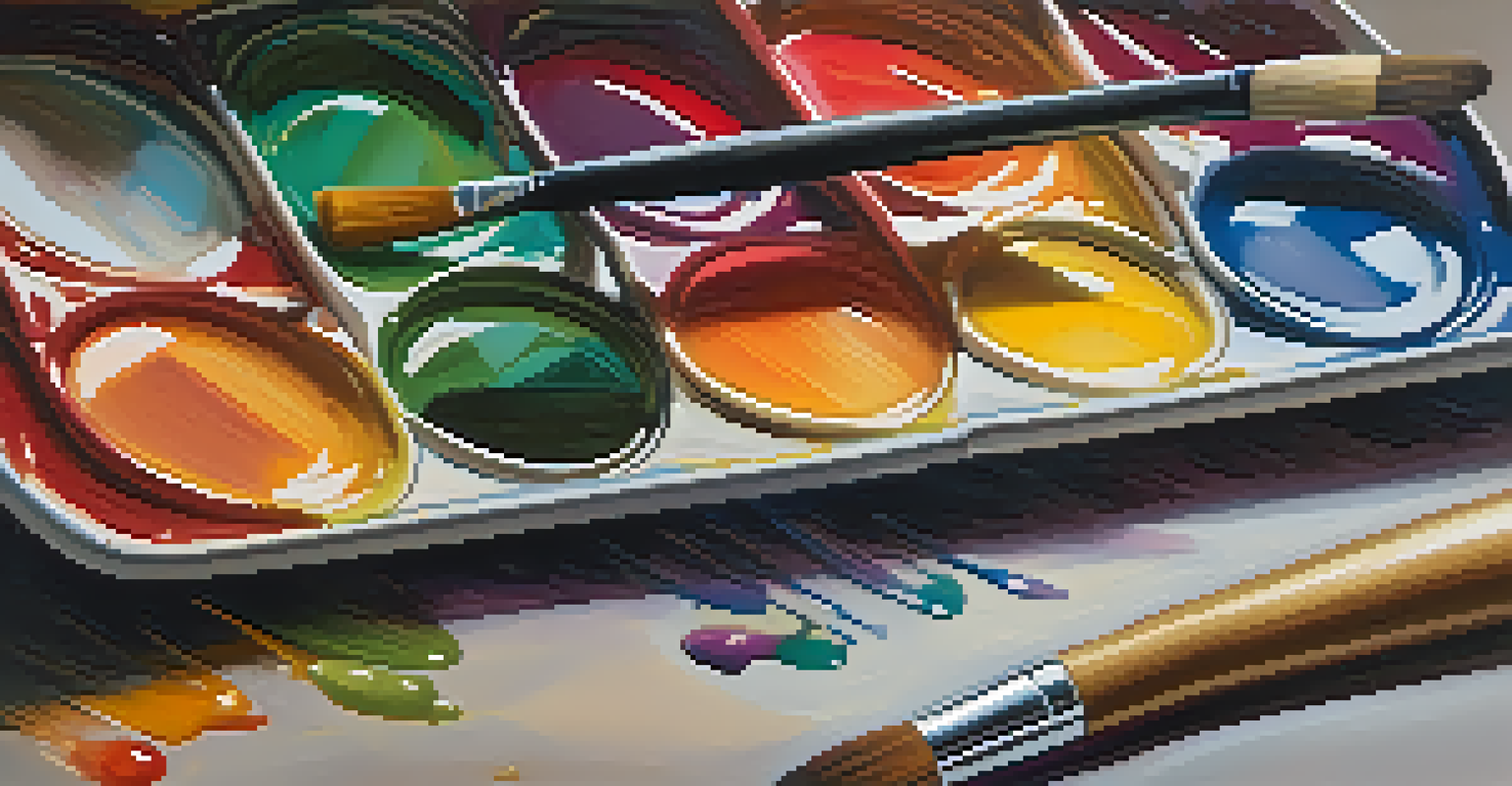Originality vs. Authenticity: What Defines True Art?

Understanding Originality in Artistic Creation
Originality refers to the unique expression of an idea or concept in art. It’s about creating something that hasn't been seen before, showcasing the artist's distinctive voice. Think of it like a fingerprint; no two artists express themselves in exactly the same way. This uniqueness can often drive the art world, as collectors and critics seek the next groundbreaking piece.
Originality is nothing but judicious imitation.
However, originality can be a double-edged sword. The pressure to be original can lead some artists to chase trends rather than explore their true artistic vision. This often results in works that feel forced or inauthentic, lacking the genuine emotion behind true artistry. Ultimately, while being original is important, it should not come at the expense of the artist's integrity.
Moreover, the definition of originality can evolve over time. What was once considered groundbreaking may become commonplace, leading to debates about whether new works can still be considered original. This fluidity in definition makes the concept of originality both exciting and perplexing, as artists navigate the ever-changing landscape of creativity.
Defining Authenticity in Art
Authenticity in art is about being true to oneself and the emotions behind the work. It reflects the artist's genuine experiences, beliefs, and emotions, creating a connection with the audience. For instance, Vincent van Gogh's raw and emotive brushstrokes resonate with viewers because they convey deep personal struggles. Authentic art often evokes feelings and sparks conversations, allowing audiences to connect on a human level.

While originality focuses on being unique, authenticity emphasizes honesty and truthfulness in representation. An artist could create an original piece that lacks authenticity if it doesn’t resonate with their true self. This distinction is crucial, as authenticity often leads to a more profound impact and lasting relevance in the art world.
Originality Is Unique Expression
Originality in art reflects an artist's distinct voice, akin to a fingerprint, but can lead to challenges when it overshadows authenticity.
Authenticity also invites vulnerability, as artists reveal parts of themselves through their work. This openness can be challenging, but it often results in artwork that feels relatable and meaningful. When artists embrace their authenticity, they invite viewers into their world, creating a shared experience that transcends mere visual appreciation.
The Interplay Between Originality and Authenticity
Originality and authenticity often coexist in the world of art, influencing and enhancing each other. An original piece that is also authentic can create a powerful emotional response, leading to a more profound connection with the audience. For example, Frida Kahlo's unique style and deeply personal themes make her work both original and authentic, resonating strongly with many.
Art is the most beautiful of all lies.
However, it’s essential to note that while both concepts are valuable, they do not always align. An artist may produce original work that feels disconnected from their personal truth, leading to superficiality. Conversely, an artist may create deeply authentic work that echoes existing styles or traditions, raising questions about its originality. This dynamic creates a rich landscape for discussion in the art community.
The balance between originality and authenticity is a continuous journey for artists. Many find themselves evaluating their work against these two concepts, striving to create pieces that reflect their unique voice while remaining true to their experiences. This ongoing exploration enriches the artistic process and ultimately leads to more meaningful art.
Cultural Influences on Originality and Authenticity
Cultural context plays a significant role in shaping both originality and authenticity in art. Different cultures have unique artistic traditions, influencing how originality is perceived and valued. For instance, traditional art forms often focus on authenticity, preserving cultural heritage, while contemporary art may celebrate originality and innovation.
Artists often draw inspiration from their cultural backgrounds, which can lead to a blend of original ideas rooted in authentic experiences. This fusion can result in artworks that are both unique and representative of a specific cultural narrative. An example is the rise of street art, which combines original techniques with authentic expressions of societal issues.
Authenticity Reflects True Self
Authenticity in art emphasizes honesty and personal experience, creating a deeper emotional connection with the audience.
However, cultural appropriation can complicate this relationship. When artists borrow elements from another culture without understanding or respecting its significance, it raises questions about authenticity and originality. This delicate balance highlights the importance of understanding cultural context, as it shapes the dialogue surrounding art and its meaning.
The Role of Technology in Art Creation
Technology has transformed the landscape of art creation, influencing both originality and authenticity. Digital tools and platforms allow artists to experiment with new techniques, expanding their creative horizons. For instance, digital art can produce original works that challenge traditional notions of art, yet may raise questions about authenticity when compared to traditional mediums.
Moreover, the internet provides artists a platform to share their work with a global audience, allowing for greater visibility and influence. This connectivity can inspire originality, as artists are exposed to diverse styles and ideas. However, it also creates a risk of homogenization, where trends overshadow individual expression.
In this digital age, the challenge lies in balancing the benefits of technology with the need for authentic expression. Artists must navigate the fine line between embracing new tools and remaining true to their unique vision. Ultimately, technology can enhance creativity, but it should complement rather than replace the authenticity of the artistic process.
Art Criticism: Perspectives on Originality and Authenticity
Art critics play a vital role in shaping the conversation around originality and authenticity. Their evaluations often influence public perception, determining which works gain recognition and which fade into the background. Critics may prioritize originality, seeking out innovative pieces that challenge the status quo, but this can sometimes overshadow authentic expressions.
Moreover, the criteria by which critics assess art can vary significantly. Some may value technical skills and innovative ideas, while others focus on emotional depth and personal truth. This divergence creates a rich dialogue within the art community, as artists and critics explore the balance between originality and authenticity in their work.
Cultural Context Matters in Art
Cultural influences play a crucial role in shaping both originality and authenticity, highlighting the importance of understanding the cultural significance of artistic elements.
This conversation is not confined to the critics alone; audiences also play a role in shaping these perceptions. Viewers bring their interpretations and experiences, influencing how art is received. Ultimately, the interplay between criticism, audience perception, and artistic intent creates a dynamic environment for discussing the value of originality and authenticity.
The Future of Art: Originality vs. Authenticity
As society continues to evolve, so will the definitions of originality and authenticity in art. The future may see a greater appreciation for authenticity, as audiences increasingly seek genuine connections with artists and their work. This shift could lead to a rise in art that prioritizes personal stories and emotional depth over mere novelty.
Conversely, the quest for originality is unlikely to diminish, as artists strive to push boundaries and challenge conventions. The ongoing dialogue between originality and authenticity will remain a central theme in art, driving innovation while fostering meaningful connections. As artists experiment with new mediums and ideas, they will continue to navigate this complex relationship.

Ultimately, the future of art will be shaped by a diverse range of voices and perspectives. By embracing both originality and authenticity, artists can create works that resonate deeply with audiences while pushing the boundaries of creativity. This balance will define the next generation of art, encouraging a vibrant and inclusive artistic landscape.